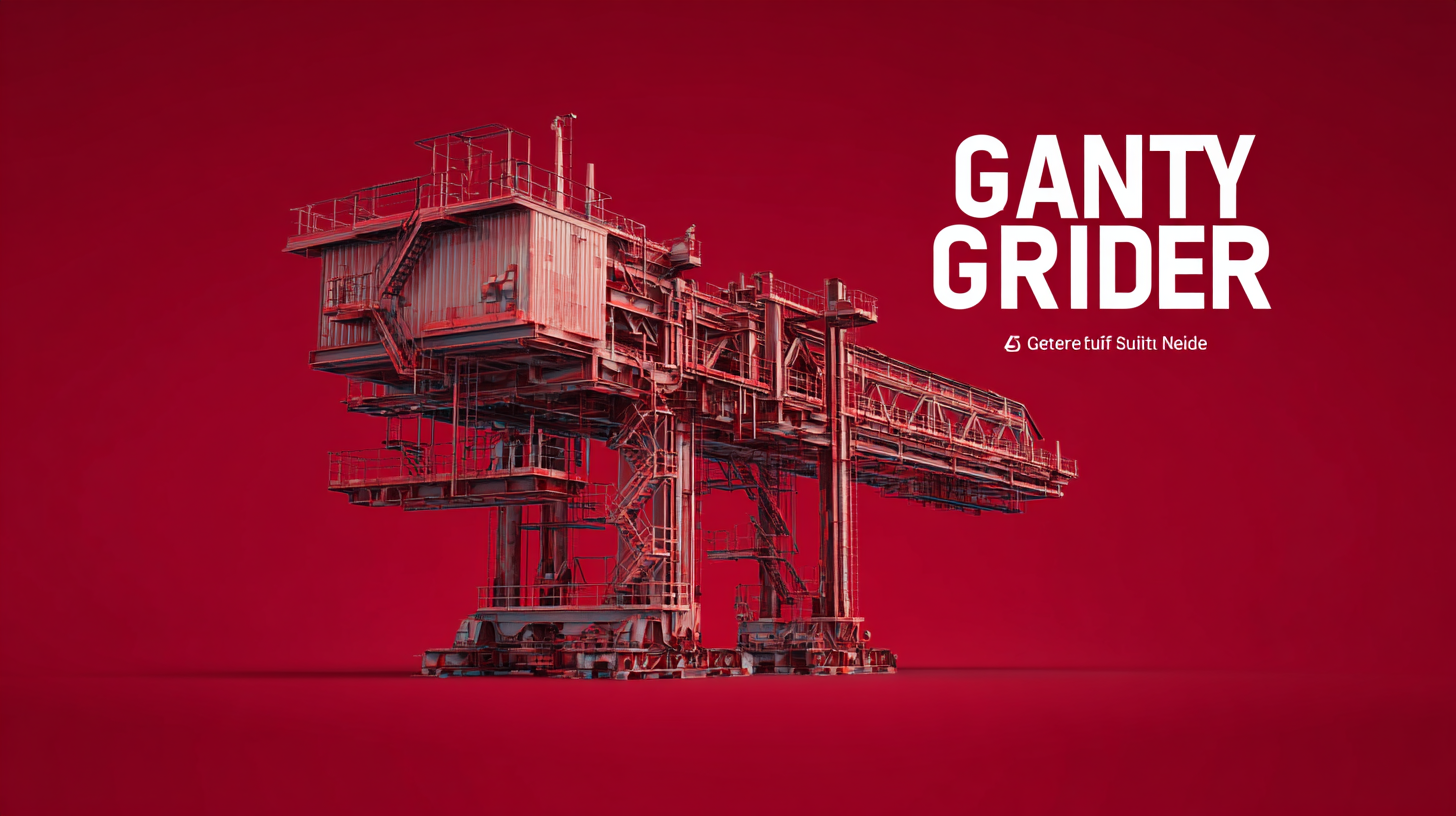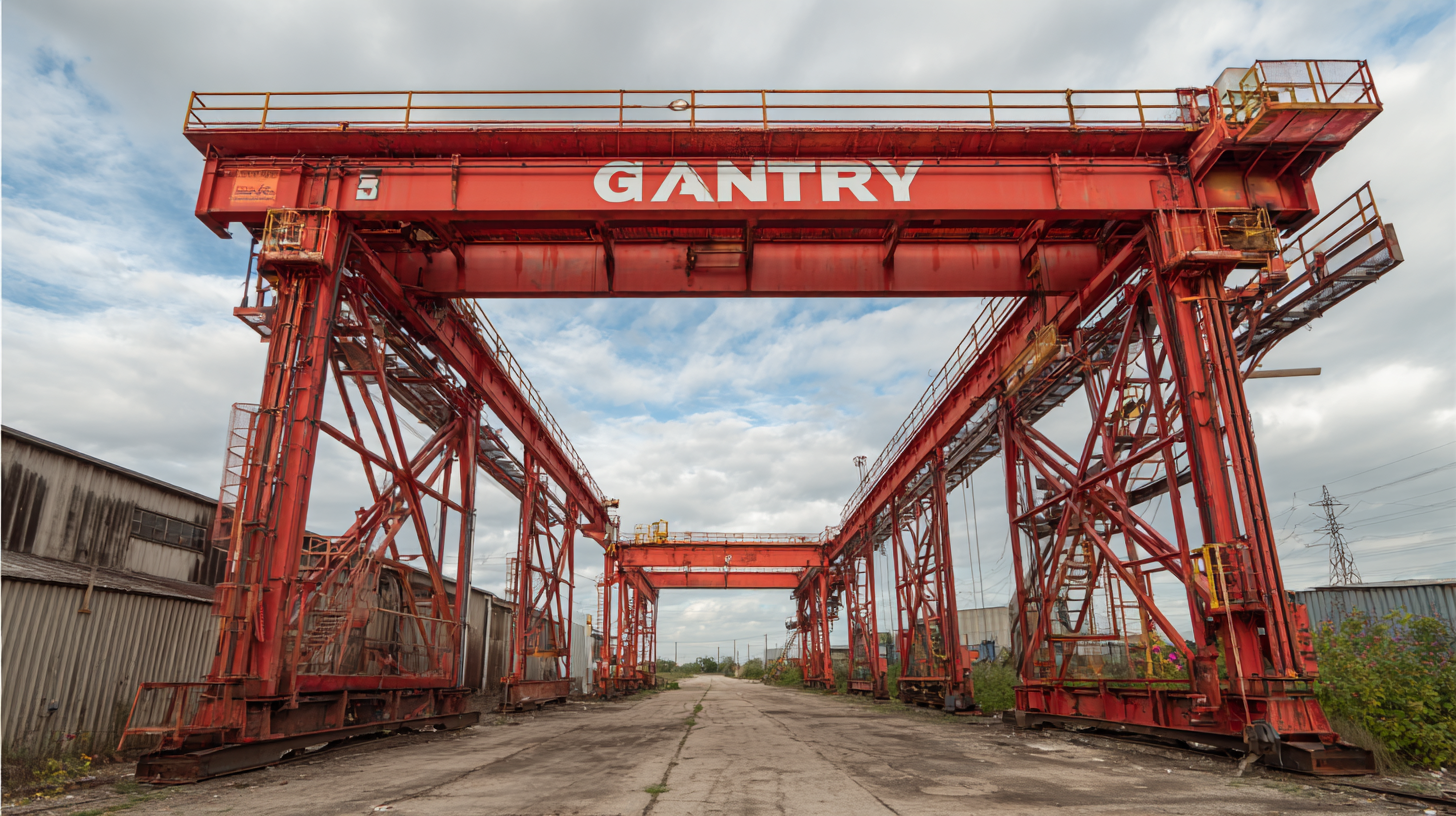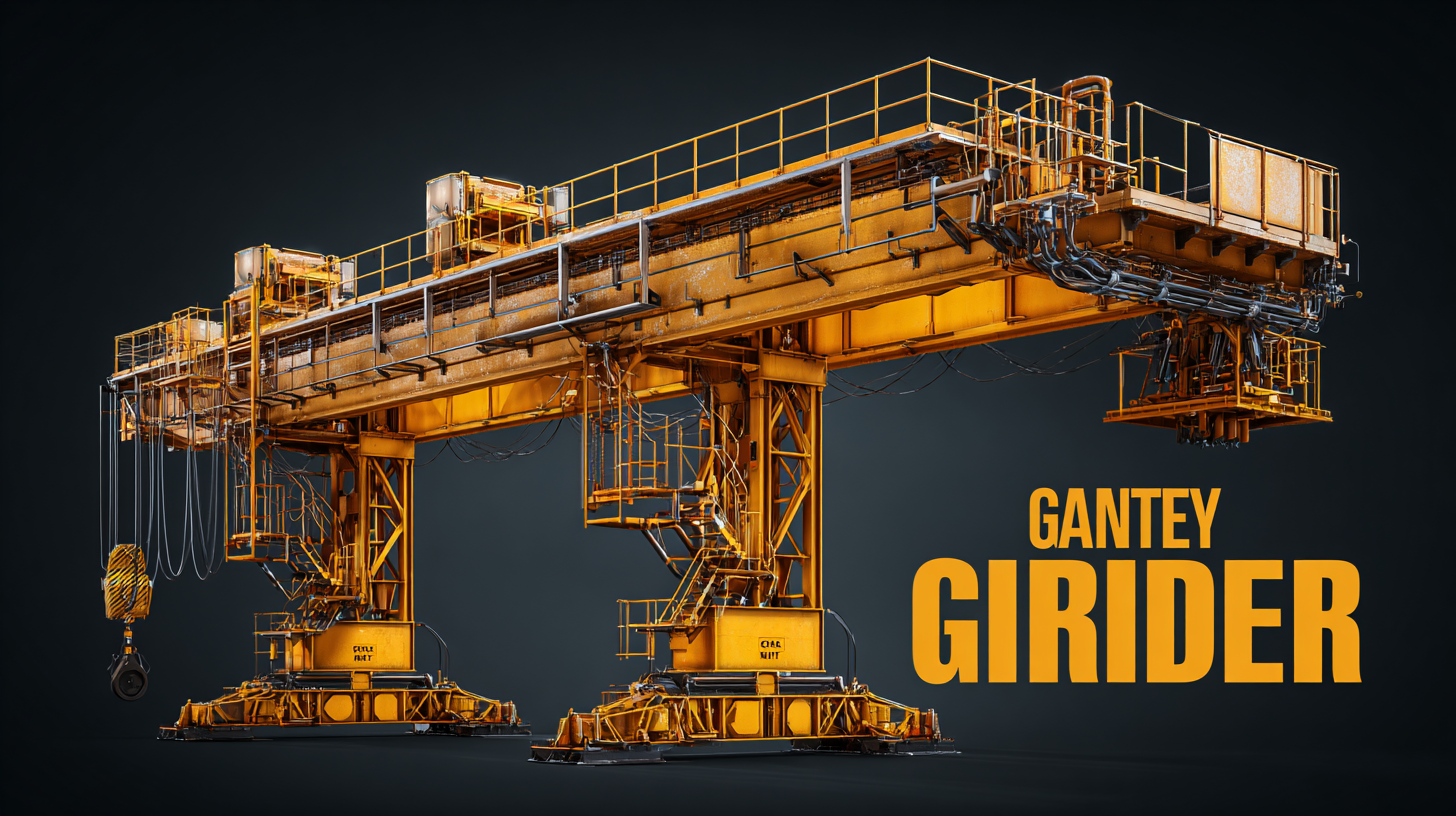Inquiry
Form loading...
-
Phone
-
Wechat

-
Whatsapp

In the realm of construction and material handling, the selection of the appropriate Gantry Girder is critical for ensuring operational efficiency and safety. According to the Global Gantry Crane Market report, the sector is projected to grow at a CAGR of 5.1% from 2021 to 2028, underscoring the increasing demand for robust and versatile material handling solutions. Different types of Gantry Girders, ranging from single girder to double girder configurations, each offer unique characteristics tailored to specific project requirements. For instance, while single girder systems are ideal for lighter loads and limited space, double girder setups are designed for heavier lifting capacities and wider spans.

This ultimate guide will explore the distinctive features and applications of various Gantry Girder types, providing valuable insights to help you make informed decisions that align with your project's needs and objectives.
When choosing gantry girders for your project, one of the foremost considerations is the load capacity. It’s essential to understand the weight and distribution of loads that the girder will support. This includes not only the static loads but also any dynamic loads caused by movement or vibrations. Consulting with structural engineers to determine the appropriate specifications will help ensure safety and durability.
Another crucial factor is the material of the gantry girder. Common materials include steel and aluminum, each offering distinct advantages. Steel provides high strength-to-weight ratios and is typically more cost-effective for heavy-duty applications. Conversely, aluminum is lighter and resistant to corrosion, making it a great choice for environments where weight is a concern. Evaluating the environment where the girder will be used and the specific requirements of your project will guide you in selecting the right material. Additionally, consider the design and flexibility of the girder system, as this can impact both installation and long-term performance.
When selecting a gantry girder, the quality of your suppliers plays a pivotal role in the overall success of your project. According to a recent report by the American Institute of Steel Construction (AISC), around 30% of project delays can be attributed to issues with material supply, highlighting the importance of partnering with reliable vendors. A reputable supplier not only provides high-quality materials but also ensures compliance with industry standards and regulations, which is critical for safety and structural integrity.
**Tip:** Always conduct thorough research on potential suppliers by reviewing their certifications and past project performance. Engaging with suppliers who have a track record of delivering on time and maintaining quality can save your project from unforeseen complications.
Moreover, the cost-effectiveness of a project is heavily influenced by the choice of supplier. A study by the National Steel Bridge Alliance (NSBA) found that choosing a quality supplier can reduce overall costs by as much as 20% due to fewer errors, lower maintenance costs, and enhanced longevity of the materials used. Ensuring that your supplier offers transparency regarding their pricing and quality guarantees can lead to long-term savings.
**Tip:** Request case studies or references from your suppliers to better understand their performance and reliability in previous projects. This will provide clearer insight into how their materials can positively affect your project outcomes.
When it comes to selecting the best gantry girder for your project, evaluating potential suppliers is a crucial step that can impact the overall success of your construction endeavors. Start by identifying suppliers with a proven track record in the industry. Look for companies that have extensive experience in manufacturing gantry girders, as this indicates their familiarity with various project requirements and standards. Checking customer reviews and testimonials can provide insight into the reliability and quality of their products. Additionally, consider suppliers who are open to sharing their previous project case studies, showcasing their expertise and competence.
Another critical aspect to evaluate is the supplier's adherence to safety and quality standards. Ensure that they comply with relevant regulations and hold necessary certifications, which guarantee that their girders meet industry specifications and safety requirements. Furthermore, assess their ability to customize products according to your specific needs. A supplier that offers flexibility and can adjust designs based on your project’s unique demands will be invaluable. Finally, establishing clear communication and a strong partnership can lead to a more successful collaboration, so prioritize suppliers who demonstrate transparency and responsiveness throughout the selection process.
| Supplier Location | Gantry Girder Type | Load Capacity (tons) | Material | Lead Time (weeks) | Price (USD) |
|---|---|---|---|---|---|
| North America | Box Girder | 25 | Steel | 8 | 5,000 |
| Europe | I-Beam Girder | 30 | Aluminum | 10 | 6,500 |
| Asia | Truss Girder | 20 | Steel | 6 | 4,000 |
| Australia | Composite Girder | 35 | Mixed Materials | 12 | 8,000 |
When sourcing gantry girders for your project, avoiding common pitfalls is crucial to ensure efficiency and cost-effectiveness. One of the most prevalent mistakes is overlooking the specific requirements of your application. Before making a purchase, thoroughly evaluate the load capacities, span dimensions, and operational environment your gantry girder will face. This helps to ensure that the selected girders are appropriate for the demands of your project, preventing costly replacements or modifications later on.

Another frequent error is failing to vet suppliers adequately. It's essential to choose a reputable manufacturer with a track record of quality and reliability. Rushing the selection process can lead you to less experienced suppliers who may not adhere to necessary safety standards or deliver products that meet your specifications. Engaging in thorough research, checking customer reviews, and requesting certifications can help mitigate this risk and lead to a more successful sourcing experience, ultimately benefiting your project in the long run.
When it comes to negotiating with gantry girder manufacturers, a few key strategies can ensure you secure the best value for your project needs. Start by conducting thorough market research to understand the average pricing and features offered by different manufacturers. This information will empower you during negotiations, allowing you to identify which offers are competitive and which ones are not worth considering.

Another effective tip is to build a strong relationship with the manufacturer. Open communication can lead to mutually beneficial outcomes. Approach the negotiation as a partnership rather than a transaction. Discuss your project’s requirements and express your expectations clearly. Manufacturers are often more willing to offer discounts or additional services if they see a potential long-term relationship with you.
Finally, don’t hesitate to leverage competitive bids. Reach out to multiple manufacturers to receive quotes, and let them know that you are exploring various options. This tactic can encourage them to improve their offers. By combining these negotiation strategies, you can enhance your chances of obtaining high-quality gantry girders at the most favorable price.
